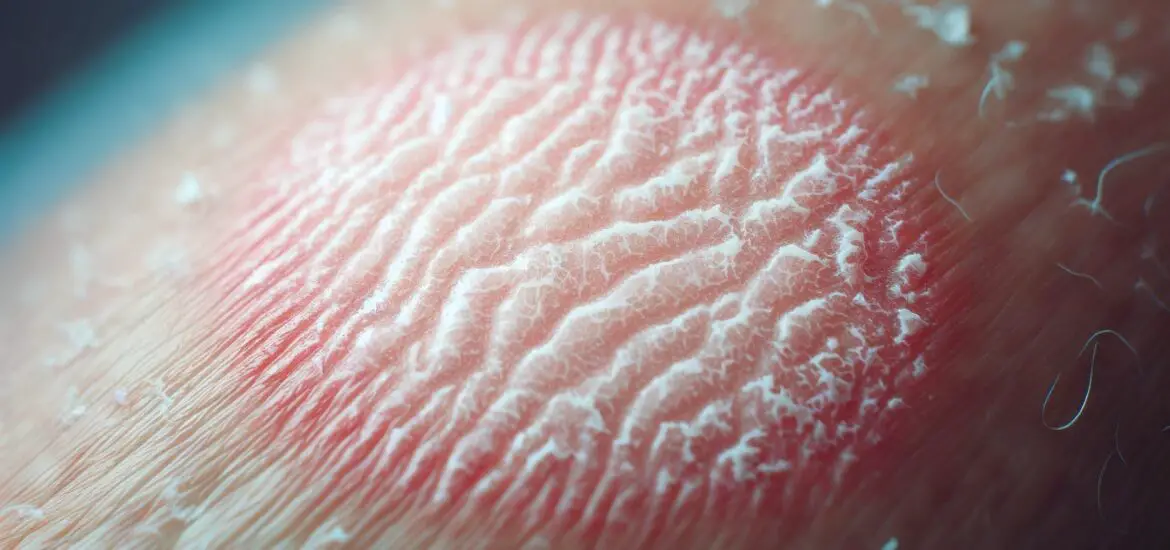This comprehensive guide aims to provide you with all the information you need to understand and manage white skin after laser tattoo removal.

Causes of White Skin After Laser Tattoo Removal
The occurrence of white skin after laser tattoo removal, commonly known as ‘ghosting’, can be attributed to several factors. The primary cause is the impact of the laser on the skin’s melanin, the pigment responsible for skin color.
Lasers used in tattoo removal are designed to target pigment. In doing so, they may also affect the skin’s natural pigment. This can lead to temporary hypopigmentation or lightening of the skin. You can notice this more in individuals with darker skin tones.
Moreover, the type of laser used, the intensity of the treatment, and the individual’s skin type can influence the extent of color change.
Another factor contributing to white skin is the potential for mild scarring. The laser treatment can alter the skin’s texture and structure, sometimes leading to scar tissue formation. This scar tissue can appear lighter than the surrounding skin.
In addition, the natural healing process of the skin post-laser treatment can also play a role. As the skin heals, there might be a temporary reduction in melanin production in the treated area, contributing to the white appearance.
Caring for Your Skin Post-Removal
After a laser tattoo removal session, the skin requires careful attention to heal properly and minimize any side effects.
The first step is to follow any specific aftercare instructions provided by your treatment specialist. Generally, it’s advised to keep the treated area clean and dry for the first few days. Use a mild, fragrance-free cleanser like this Cetaphil Gentle Skin Cleanser and gently pat the area dry. Avoid rubbing or scrubbing the area.
Moisturizing is an essential part of aftercare. Apply a fragrance-free, hypoallergenic moisturizer to prevent dryness and promote healing.
You can get this Curel Fragrance Free Lotion from Walmart.
In addition, it’s crucial to protect the treated area from sun exposure. UV rays can exacerbate the lightening of the skin and may even lead to permanent pigment changes. Always apply a broad-spectrum sunscreen with at least SPF 30 before going outdoors. The Elta MD UV Lotion SPF 30+ Broad Spectrum Full Body Sunscreen is a perfect example.
It’s also important to avoid certain activities that could irritate the treated area. This includes avoiding swimming, hot tubs, and strenuous exercise for a few days post-treatment. These activities can increase the risk of infection and slow down the healing process.
Lastly, resist the urge to pick or scratch at the treated area. This can lead to scarring and interfere with the skin’s natural healing process.
Check out these other articles…
Hole in Skin After Laser Tattoo Removal: Comprehensive Guide
Yellow Skin After Laser Tattoo Removal: Causes & Care Tips
Itchy Skin After Laser Tattoo Removal: Effective Remedies
Can You Still See a Tattoo After Laser Removal? Answered
What Should I Put on Skin After Laser Tattoo Removal?
Red Skin After Laser Tattoo Removal: 4 Causes & Solutions
How to Avoid Scarring After Laser Tattoo Removal: Easy Guide
When to Seek Medical Advice
While most side effects of laser tattoo removal are temporary and resolve on their own, there are certain signs that warrant seeking medical advice. If you notice prolonged redness, swelling, or pain in the treated area that doesn’t subside within a few days, it could be a sign of an infection or an allergic reaction.
In addition, if the white skin does not begin to return to its normal color within several months, or if you observe signs of significant scarring, these are reasons to consult a healthcare professional.
Other symptoms that require attention include blistering, excessive peeling, or discharge from the treated area. These could indicate an adverse reaction to the treatment.
In such cases, a dermatologist or your tattoo removal specialist can assess your skin’s condition and provide appropriate treatment or recommendations. They might suggest topical treatments, further medical evaluations, or alterations to your aftercare routine.

